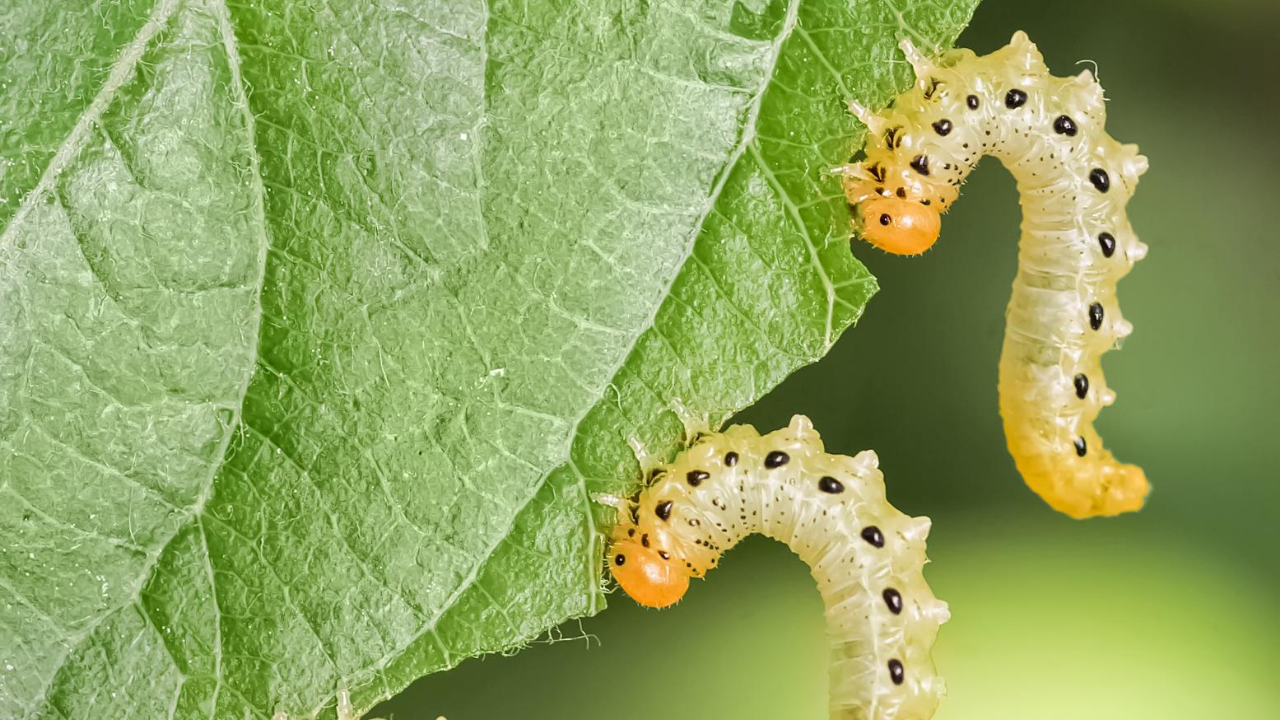
You’ve probably noticed that various types of bugs occasionally occur on your houseplants or garden plants. Although not all bugs are harmful, some of them are quite damaging. The real garden problems are usually caused by tiny bugs and even experienced gardeners have to deal with plant pests sometimes. However, there are many ways to prevent and control pests, so read on to learn how to get rid of bugs eating plants.
What are Plant Pests?

A plant pest is a tiny insect or an animal that can cause damage to plants. Pests can damage plants directly, by feeding on parts of the plant, or sucking plant’s juices on the count of the host plant. They can even damage the plant indirectly, by spreading fungal, bacterial, or viral diseases.
The most common plant pests are aphids, mealybugs, scale insects, spider mites, springtails, fungus gnats, etc. Some other herbivores that are not insects, but are considered plant pests are millipedes (not to be confused with a centipede, which is a rather beneficial carnivore in the garden), snails and slugs.

Most of the symptoms of a pest infestation are easily noticeable, but there’s a wide array of symptoms, depending on the type of the pest.
First symptoms usually appear on leaves. The leaves can change color and texture, or become spotted or dried; flowers won’t bloom, and the entire plant can look weak or start withering. And sometimes you will notice tiny insects on your plant.
When you spot the first sign of a pest infestation, you should act immediately. If possible, isolate the infested plant and be sure to identify correctly the type of pest, so you could apply the adequate measures.
How to Control Pest Infestation
There are numerous ways to get rid of plant pests, but the best approach is the so-called integrated pest management (IPM). This approach is based on several principles such as prevention, monitoring, mechanical and biological control, and responsible use of chemicals or synthetic pesticides.
In other words, before going for a chemical insecticide, you should try to combat plant pests in more natural, ecologically harmless ways.
Mechanical Control
Mechanical pest control is pest management that uses physical means for creating a barrier between a pest and a plant. This type of control includes various traps and repellents, but also other methods like hand-picking and weeding.

For example, most pests are attracted to yellow color, so gardeners often use a sticky yellow paper to draw pests away from plants.
Mechanical control works particularly well with larger, visible pests such as snails and slugs. You’ve probably heard of several mechanical ways to fight these nuisances. The beer trap is quite popular – fill a plastic cup or a container with beer, dig a hole in the soil, and put the beer trap inside it. Since beer attracts snails and slugs, they will fell down and drown.
CTTO: Moat Cottage Homesteading
Biological Control
This type of pest control includes using other living organisms to combat plant pests. As previously said, not all types of bugs are harmful to plants. Ladybugs, bumblebees, flies, green lacewings, ground beetles, praying mantis, centipedes, beneficial nematodes, and many other insects are so-called good guys in the garden. They are very beneficial insects in the garden because they are natural enemies and predators of certain plant pests.
Beneficial bugs can help in pest control in many different ways. For example, spiders can trap pests in their net, while a parasitic wasp lays its eggs inside aphids causing them to die.
Besides insects, there are other beneficial animals in the garden. Toads, frogs, hedgehogs, bats, birds – these are only a few of numerous animals that are helpful companions in fighting plant pests. Geese are perhaps the best way to get rid of slugs and snails and keep their populations under control.
In the case of a pest infestation, you can try to introduce these insects to your garden, or, if you spot some of the good fellas mentioned above – keep them around your garden.
Good Neighbor Plants

Some plants, especially herbs and aromatic plants, are the best natural pest-repellents. Therefore, you should always consider including some pest-repelling plants into your garden.
Basil, chrysanthemums, garlic, geraniums, peppermint, rosemary, tansy, marigolds, coriander, dill… These plants are proven to be natural pest-repellents. And the list is quite long!
So, next time you plan your garden, find a place for these “good neighbors”.
Botanical Pesticides and Homemade Natural Remedies
Natural insecticide for plants and organic methods are always recommended before jumping right to the garden chemicals. Botanical pesticides are derived from plants and are less harmful and toxic than chemical insecticides.
Neem oil for plants, alcohol, nicotine sulfate, pyrethrum, rotenone, ryania, and sabadilla are some of the most popular botanical insecticides available on the market. If you decide to use a botanical pesticide, use it strictly in accordance with the given instructions.
Another popular, but effective method is using natural and organic homemade pesticides, usually made from simple ingredients that anyone can find in their household.
Some of the ingredients commonly used for making a safe, natural, and harmless pesticide are garlic, onions, pepper, nettle, baking soda, hot peppers, mineral and vegetable oil, etc.
An insecticidal soap, sold under different names, is a quite useful product in combating plant pests. Insecticidal soaps are different than dishwashing soaps and household detergents, designed specifically for plants. Their main ingredients are potassium salt of fatty acids, and these soaps have the ability to minimize the plant injury.
Chemical Pesticides
Although non-chemical pesticides are always the first choice for gardeners, using a chemical pesticide is advised only when nothing else works. Chemical pesticides are mostly used for agricultural crops, but some products are available for home gardening.
Before going for a synthetic pesticide, be sure if it’s necessary. Be sure to identify the problem correctly and to use an adequate garden chemical. You should be aware that using a chemical pesticide must be done according to the instructions on the label.
Pest Prevention
Although we’ve saved the prevention for the end, it doesn’t mean it’s the least important part of successful pest control. Actually, prevention is the best way to minimize the risk of pest infestation. Here are some tips on pest prevention.
- Keep a good gardening practice and keep your garden clean and weed-free
- Use clean, sterile garden tools and disinfect pots before planting
- Use fresh, sterile potting soil
- Buy only healthy-looking plants without signs of damage
- Buy cultivars and varieties that are pest- and disease-resistant
- Employ physical barriers as a mean of prevention
- Prune your plants and plant your crops following the recommended spacing
- Consider introducing beneficial insects and animals
- Plant pest-repelling plants
- Inspect your plants regularly for any sign of pest infestation
- Always remove the infested plant material and try to isolate the infested plant if possible



